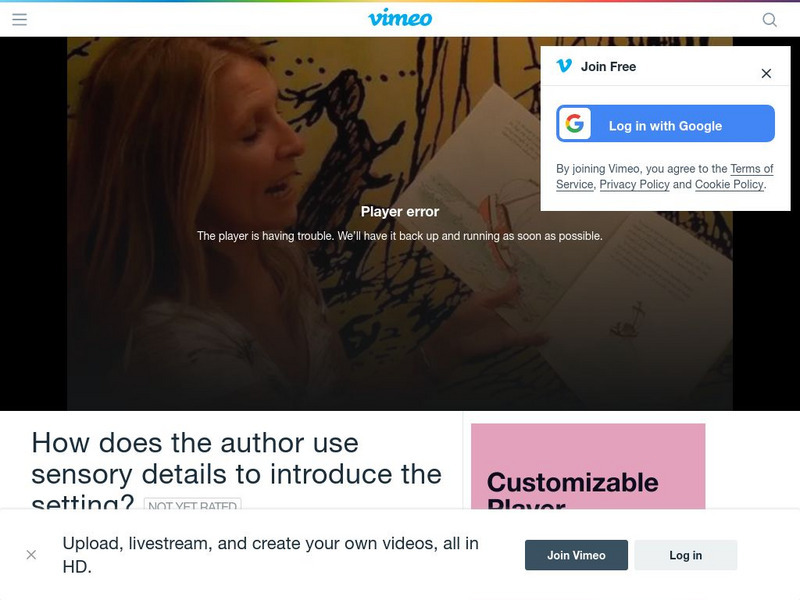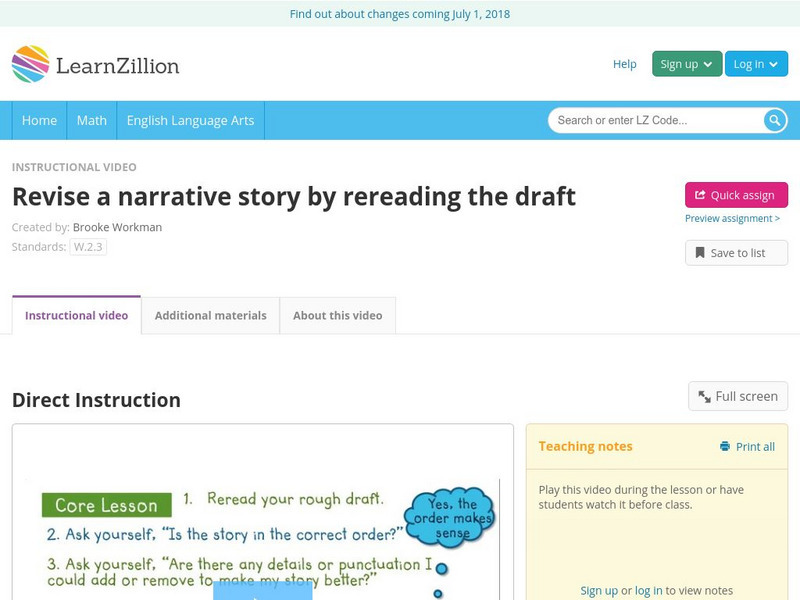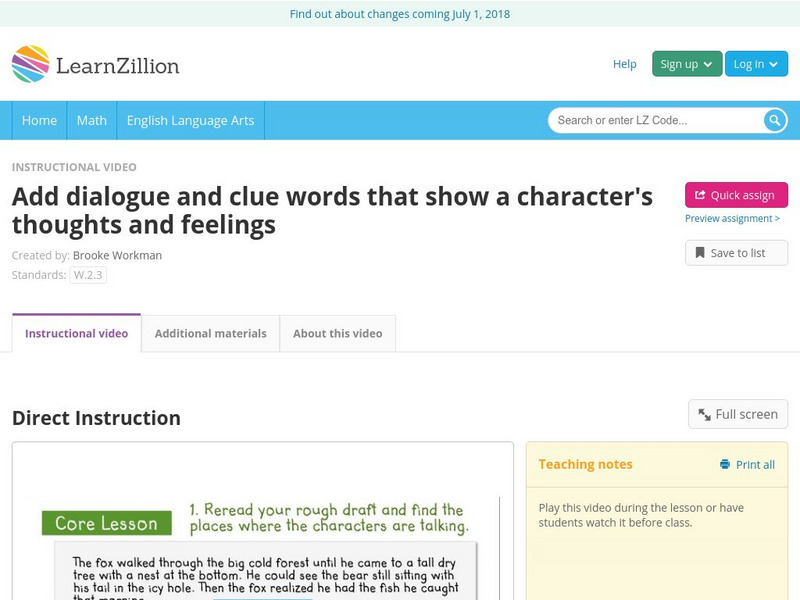PBS
Pbs Learning Media: The Three Little Pigs
This video segment from Between the Lions uses a classic children's book to illustrate reading aloud, one of the most important practices in developing children's literacy skills. [3:29]
Imagine Learning Classroom
Learn Zillion: Add Details About Characters in Narrative Writing
In this lesson, you will learn how to make your story more realistic and exciting by adding details about the characters. [5:38]
Creek View Elementary School
Vimeo: How Does the Author Use Sensory Details to Introduce the Setting?
Watch an educator read a picture book, and practice identifying the sensory details as clues about the setting. [1:38]
Imagine Learning Classroom
Learn Zillion: Examine How Characters Interact Through Dialogue
In this lesson, you will learn how an author uses dialogue to introduce a story by examining what the characters say to each other and determining how the story is set up. A slideshow and student handouts are available with site login....
Imagine Learning Classroom
Learn Zillion: Explain How a Playwright Tells a Story
In this lesson, you will learn to explain how a playwright tells a story by looking at setting, character dialogue, and stage directions. [6:26]
Imagine Learning Classroom
Learn Zillion: Write a Rough Draft of a Narrative Story in Complete Sentences
In this lesson, you will learn how to write a rough draft of a narrative reading response by using your planning chart to write the events of the story in complete sequenced sentences. Login gives access to a slideshow as well. [5:51]
Imagine Learning Classroom
Learn Zillion: Revise a Narrative Story by Rereading the Draft
In this lesson, you will learn how to revise a narrative reading response by rereading and asking yourself, 'What details can I add to make my story stronger and are there any details I can remove?' Login gives access to a slideshow as...
Imagine Learning Classroom
Learn Zillion: Add Dialogue That Shows a Character's Thoughts and Feelings
In this lesson, you will learn how to add dialogue and clue words to show what characters are saying, thinking, and feeling by asking yourself, 'How is the character feeling?' and adding the words and punctuation to show the character's...
Texas Education Agency
Texas Gateway: Comic Cam: Expressive Reading
Jennifer Barber introduces the different characters she created for her stories when she was seven years old. She reads one of her stories using different voices to differentiate between the three characters. This resource teaches...
PBS
Pbs: Piggley's Storyteller Warehouse
In this episode of Piggley's Storyteller Warehouse, the host shares the basic building blocks of all stories: Who? What? Where? The host then sets the characters' names, the conflict, and the setting to the tune of a rap song.
Curated Video
You Tube: Narrator Definition, Examples, and Practice
This video and worksheet define narrator and explain how the narrator compares to the author and characters in a story. The video defines each term, then gives excerpts from well-known stories for learners to read and evaluate based on a...
PBS
Pbs Learning Media: Comic Cam: Expressive Reading
In this video [1:43], Jennifer Barber introduces the different characters she created for her stories when she was seven years old. She reads one of her stories using different voices to differentiate between the three characters. This...
PBS
Pbs: Rounding Up the Rhymes
In this video, effective for engaging students with significant cognitive disabilities, the teacher reads text to identify pairs of rhyming words within the story.
PBS
Pbs Learning Media: Tea Mology: Helping and Learning From Mistakes
TEAMology characters Harper and Paco lend a little assistance at the local library! Learning to read and learning from mistakes is packaged with fun. [4:57]









